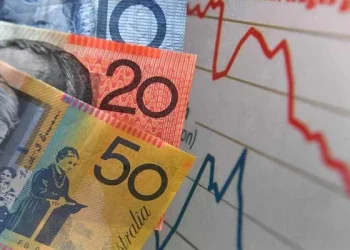Currency conversion is a common concern for travelers, investors, and businesses engaged in international transactions. The exchange rate between the Japanese Yen (JPY) and the United States Dollar (USD) fluctuates based on various economic factors. This article explores the current exchange rate of 40,000 Yen to US Dollars, factors influencing exchange rates, historical trends, and practical considerations when converting currencies.
Understanding Currency Exchange Rates
Definition and Basics
Currency exchange rates determine the value of one currency relative to another. They fluctuate continuously due to supply and demand dynamics in the foreign exchange market. Exchange rates are influenced by economic indicators, geopolitical events, central bank policies, trade balances, and market sentiment.
Direct and Indirect Quotes
Exchange rates can be quoted directly or indirectly. A direct quote expresses the value of one unit of foreign currency in terms of the domestic currency (e.g., 1 USD = 110 JPY), while an indirect quote expresses the value of one unit of domestic currency in terms of the foreign currency (e.g., 1 JPY = 0.0091 USD).
Current Exchange Rate: 40,000 Yen to US Dollars
As of the latest market data, the exchange rate for 1 Japanese Yen (JPY) is approximately 0.0063 US Dollars (USD). Therefore, to calculate how much 40,000 Yen is in US Dollars:
40,000 JPY×0.0063 USD/JPY=253 USD
So, 40,000 Japanese Yen is approximately 253 US Dollars.
Factors Influencing Exchange Rates
Economic Indicators
Key economic indicators such as GDP growth rates, inflation rates, employment figures, and interest rates can impact exchange rates. Stronger economic performance typically strengthens a country’s currency, while weaker economic indicators can lead to currency depreciation.
Central Bank Policies
Monetary policies set by central banks, such as interest rate decisions and quantitative easing measures, play a crucial role in influencing exchange rates. Higher interest rates attract foreign capital, increasing demand for the currency and raising its value.
Political Stability and Geopolitical Events
Political stability and geopolitical tensions can impact exchange rates by affecting investor confidence and economic outlook. Uncertain political environments often lead to currency volatility and fluctuations in exchange rates.
Trade Balances
The balance of trade between countries, including imports, exports, and trade deficits, affects currency exchange rates. Countries with trade surpluses tend to have stronger currencies, while those with trade deficits may experience currency depreciation.
Historical Exchange Rate Trends
Long-term Trends
Over the past decade, the exchange rate between the Japanese Yen and the US Dollar has fluctuated significantly. Historical trends show periods of strength and weakness for both currencies, influenced by global economic conditions, monetary policies, and geopolitical developments.
See Also: Current YEN Exchange Rate: How Much Is 1000 Yen to Dollars?
Recent Trends
In recent years, the Japanese Yen has maintained relative stability against the US Dollar, with fluctuations influenced by economic data releases, central bank policies, and trade negotiations between Japan and the United States. The exchange rate has hovered around 110 JPY to 1 USD in recent months, reflecting a balanced economic relationship between the two countries.
Practical Considerations for Currency Conversion
Exchange Rate Calculators
Various online tools and currency exchange calculators provide real-time exchange rate information and facilitate currency conversions. These calculators factor in current exchange rates, fees, and charges levied by financial institutions to provide accurate conversion estimates.
Conversion Fees and Charges
When converting currencies, financial institutions may charge fees or apply a margin to the exchange rate. It is essential to compare exchange rates and fees across different providers to minimize costs and maximize the amount received in the desired currency.
Timing of Transactions
Timing can significantly impact the amount received in currency conversions. Monitoring exchange rate trends and executing transactions during favorable rate periods can result in more advantageous conversion rates and savings on currency exchange costs.
Hedging Strategies
Businesses engaged in international trade often employ hedging strategies to mitigate currency exchange rate risks. Hedging instruments such as forward contracts and options allow businesses to lock in exchange rates for future transactions, providing stability and predictability in financial planning.
Conclusion
Understanding currency exchange rates and converting currencies accurately is essential for individuals and businesses engaged in global transactions. The exchange rate for 40,000 Japanese Yen to US Dollars fluctuates based on economic factors, market dynamics, and geopolitical events. By monitoring exchange rate trends, considering historical data, and leveraging currency conversion tools, individuals can make informed decisions when converting currencies and optimizing their financial transactions. Whether traveling, investing, or conducting business internationally, awareness of exchange rates and their influences enables effective management of currency risks and opportunities in the global economy.
Related Topics:























